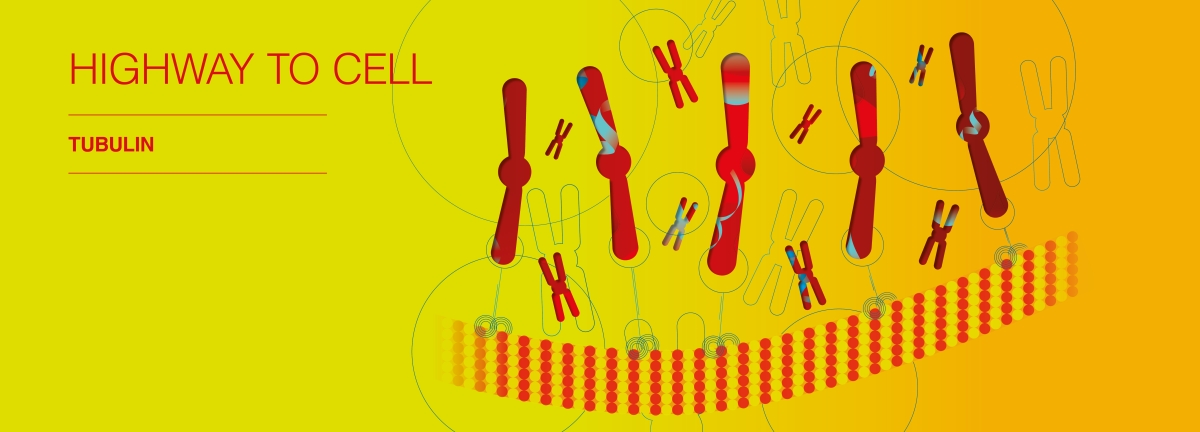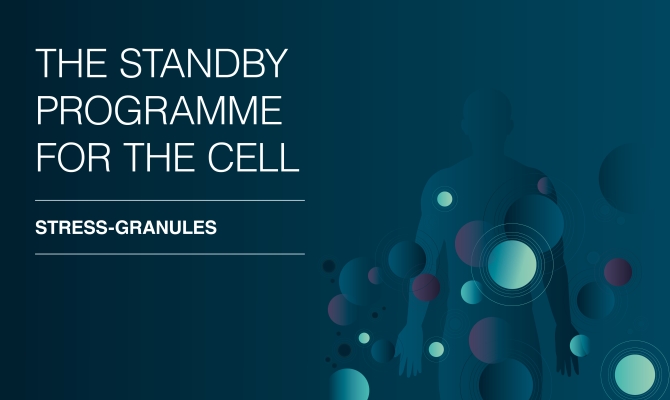
The framework of life at the cellular level
It’s all too common for us to hang our heads in despair whenever we encounter traffic jams or blocked access roads. For whatever reason, it’s sometimes just not possible to get to where we need to in a reasonable amount of time. Put simply: Things get stuck.
Yet this challenge isn’t one that our body’s familiar with. This is all thanks to microtubules – the effective, targeted and punctual transport specialists of our body. These microstructures build a kind of “railway” through the cell for the smooth facilitation of vesicular transport, and play a special role in cell movement. Whether pushing or pulling, microtubules ensure things get to where they need to quickly – and are, so to speak, our “highway to the cell”.
The cells’ natural highways
As the name suggests, microtubules are microscopic tubular structures. These consist of intracellular polymers of the globular protein tubulin. With a diameter of about 20 to 30 nm – more than a thousand times thinner than a human hair – these small protein structures are an important component that gives the cell its shape and strength. The role of tubulin and the microtubules that result from it is essential: They give the cell its shape and stability, similar to how bones give structure to the human body. But that is only part of their function – microtubules can also be considered as the “highways” of the cell. Special transport proteins move along these highways, transporting various “goods” through the cell. These goods can be molecules, organelles or even chromosomes that need to be transported to their destination during cell division. Without tubulin and the microtubules it forms, the inner workings of the cell would fall into chaos, since the cell would no longer be able to transport its building blocks efficiently.
Dynamic structures
One particularly remarkable aspect of tubulin is its ability to dynamically adapt to the needs of the cell. Tubulin can be rapidly assembled into new microtubules, or degraded from existing ones. These process are respectively known as polymerisation (construction) or depolymerisation (degradation). The cell uses this dynamic to rapidly change its structure – which is particularly important when the cell grows or divides, or has to respond to external stimuli. The way that tubulin makes the cell flexible and responsive could be likened to scaffolding that is constantly being rebuilt, according to the progress of construction.
Cell transport routes
Tubulin also plays a major role in everyday life, particularly for the function of the nervous system. Nerve cells, also called neurons, rely on microtubules to transport signals and nutrients along their long extensions, the axons. This transport is crucial for communication between nerve cells, and thus for the entire nervous system. Without tubulin and microtubules, our brain would be unable to process information – making basic functions such as thinking, feeling and moving impossible.
Laying down the tracks from the very beginning
Researchers found that tubulins also play an important role in the creation of new life. More specifically, a change in the protein tubulin, called glycylation, is needed so that sperm can swim in a straight line and reach their destination quickly. Scientists at the Institut Curie in Paris, the Max Planck Institute of Molecular Cell Biology and Genetics in Dresden and the caesar Research Center in Bonn discovered that the activity of the dynein motor proteins must be precisely coordinated. If glycylation by the tubulins does not occur, the motor proteins do not coordinate with each other and the sperm instead swim around in circles, rather than moving quickly forward.
In summary, tubulin is much more than just a protein: It is a basic building block of life that gives cells their structure, serves as a transport route and allows them to adapt flexibly to their environment. Tubulin is the invisible but essential helper that pulls the strings in the background and ensures that everything runs smoothly – from cell division through to brain function. It may be invisible and tiny, but tubulin does a great deal of work – without which, life as we know it would not be possible.
And we too at Carl ROTH work hard every day to advance science. As a transporter, we are unbeatable – and so is our product selection.
https://flexikon.doccheck.com/de/Mikrotubulus
https://www.mpg.de/16226295/0107-mozg-spermien-auf-dem-richtigen-weg-151300-x
https://www.jkip.kit.edu/botzell/2184.php
https://www.lmu.de/de/newsroom/newsuebersicht/news/die-dynamik-der-mikrotubuli.html


